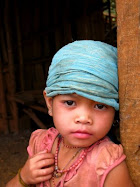
I spent a couple days in Coyhaique, taking one day to go by bus to Puerto Chacabu to eat fish and photograph abandoned boats in the harbor. On the way I met a backpacker from Santiago who I had an interesting conversation with using an i phone translation AP. I must get an i phone! Next stop was Cochrane, and early the next morning I was on my way again hitchhiking to Caleta Tortel, the hanging village. Caleta Tortel is a very old village with houses built on the steep hillsides that drop directly into the ocean. There are no roads and the village is accessed by a series of boardwalks. The weather here is horrible, windy and rainy all the time with the wind blowing straight through the flimsy wood walls of the buildings. Perched as it is over the water, it is a place that should be charming but I could not actually wait to get away the next morning. Perhaps I was sick of the cold and rain, or maybe I found the impermanence of the place unsettling, but overall it was a bit of a depressing place to be, so it was with relief that I found myself early the next morning out on the road again with my thumb in the air.

There are no roads and the whole town is reached by a series of boardwalks built over the water or steeply climbing up the hills.



Nothing is built to last in Caleta Tortel and the elements quickly take their toll on the flimsy wood construction. I liked the flowered sheet hanging in the window of this home.

An old boardwalk goes into ruin.

Hats hang in front of the window of a tourist shop that seems to be abandoned.

Puerto Chacabu, near Coyhaique.






































